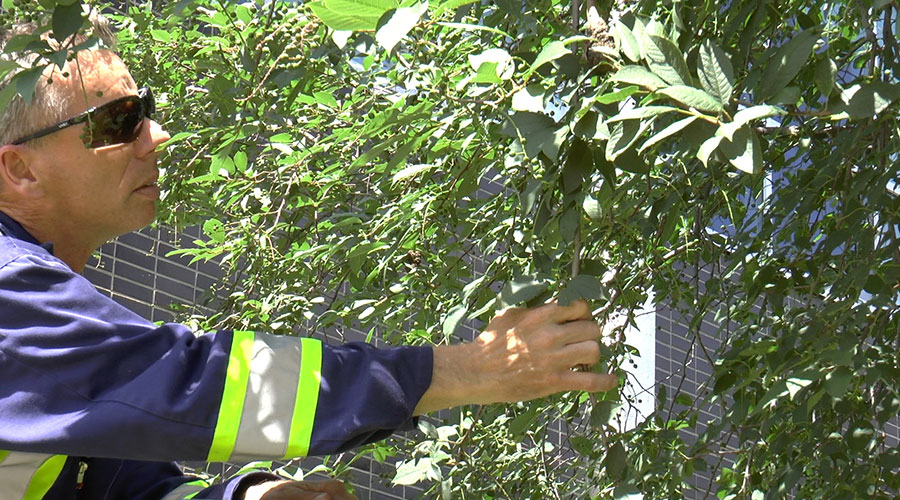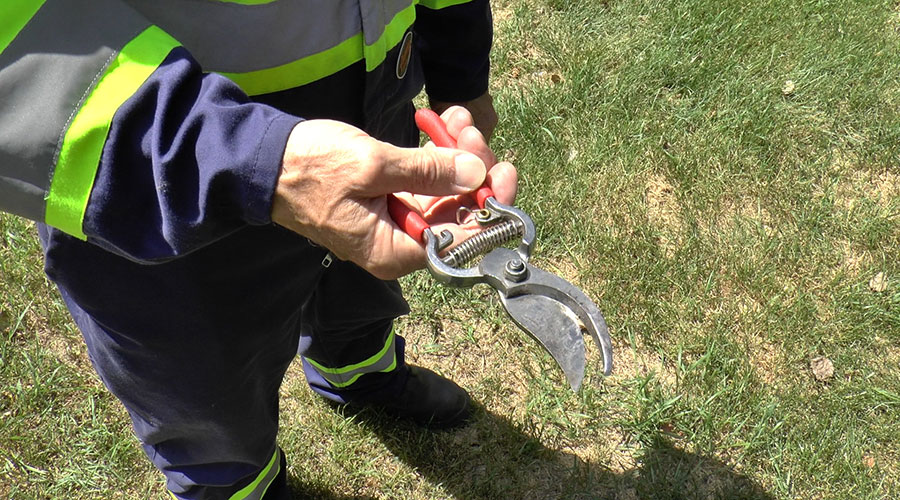It’s hideous, but manageable with vigilance and a sharp set of pruners
The prettiest trees in your yard might be infected with one of the ugliest diseases.
Black knot fungus shows up in ornamental mayday trees and Schubert chokecherries as a kind of botanical character foil to the fragrant white flowers of the former and the royal purple leaves of the latter. It’s knobby, scabby and burnt looking – and “endemic” in Edmonton year after year, says NAIT grounds supervisor Dan Tavenier.
“We’ve evolved into something of a monoculture,” says Tavenier of the city’s landscape, in which the two trees have been heavily planted. “We’ve planted far more Schuberts and maydays than are healthy, and those two trees are probably the most susceptible species [to black knot]. I think that’s responsible for the level of the outbreak.”
Transferred from plant to another primarily by wind, the fungus affects trees and shrubs in the prunus family, which includes less vulnerable plums, sandcherries and Russian almonds. Happily, “it’s a pretty straightforward disease,” says Tavenier. “You can intercept the disease cycle by pruning out the knots.”
Check out the video above, along with the details below, to see how to keep the beauty of your yard from being blighted.
When to worry
The hot, rainy weeks of midsummer are a heyday for black knot. “It thrives in a warm, moist environment and typically infects new growth,” says Tavenier. It only takes about six hours for the spores to germinate on new wood.
What to look for
 Inspect your maydays and Schuberts yearly, says Tavenier. Mature knots, which are able to send out spores, can be obvious. Early signs of infection are tougher to spot. “If you look carefully, you can find them.” Watch for slight but unusual swellings; by next year, those areas turn olive-brown. Catch them before they scab up.
Inspect your maydays and Schuberts yearly, says Tavenier. Mature knots, which are able to send out spores, can be obvious. Early signs of infection are tougher to spot. “If you look carefully, you can find them.” Watch for slight but unusual swellings; by next year, those areas turn olive-brown. Catch them before they scab up.
What to do about the knots
There is no chemical control for black knot. Your best defence is diligence and pruning shears or a saw – though not just for cutting out knots.
Your best defence is diligence and pruning shears.
“The primary strategy is to keep trees dryer,” says Tavenier. Prune healthy inner branches to improve airflow through the tree and lessen the likelihood of spores settling on branches.
If you spot a knot, follow the branch back 15 to 20 centimetres and make a clean cut. If the canker is on the trunk, you can carefully remove it with an arborist’s knife, shaving about a centimetre into clean wood. “It’s a bit of a lost art,” says Tavenier of this method. Try to leave a smooth edge for faster healing.
Tavenier has never seen any benefit of disinfecting shears or saws after cutting out a knot. If you still worry about spreading spores from one cut to the next, he recommends rinsing tools with Dettol or a 10% bleach solution.
When you’re done, dispose of the knot away from other trees or burn it so it can’t spread spores.
When to cut
 With black knot, the rule of sparing the saw while a tree is actively growing is meant to be broken. If you see trouble, cut it out.
With black knot, the rule of sparing the saw while a tree is actively growing is meant to be broken. If you see trouble, cut it out.
“If it’s diseased, dead or broken, it’s not doing anybody any good," says Tavenier. "Just get rid of it.”